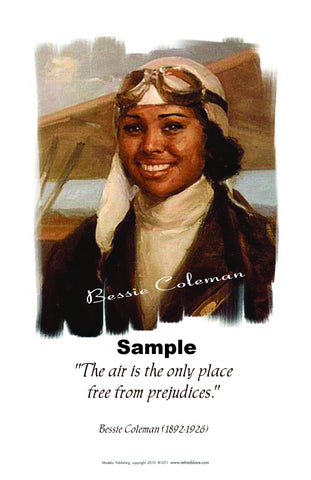Tuskegee Airmen #1454
$ 8.00
Caption from poster__
Tuskegee Airmen
In spite of adversity and limited opportunities, African Americans
have played a significant role in U.S. Military history over the
past 300 years. They were denied military leadership roles and
skilled training because many believed they lacked qualifications
for combat duty. Before 1940, African Americans were barred
from flying for the U.S. Military. Civil Rights organizations and
the Black press exerted pressure that resulted in the formation of
an all African American pursuit squadron based in Tuskegee,
Alabama, in 1941. They became known as the Tuskegee Airmen.
"Tuskegee Airmen" refers to all who were involved in the so-called
"Tuskegee Experiment," the Army Air Corps program to train
African Americans to fly and maintain combat aircraft. The
Tuskegee Airmen included pilots, navigators, bombardiers, main-
tenance and support staff, instructors, and all the personnel who
kept the planes in the air. The military selected Tuskegee Institute
to train pilots because of its commitment to aeronautical training.
Tuskegee had the facilities, and engineering and technical in-
structors, as well as, a climate for year round flying. The first
student to complete Civilian Pilot Training instruction was in May
1940. The Tuskegee program was then expanded and became the
center for African American aviation during World War II. The
Tuskegee Airmen overcame segregation and prejudice to become
one of the most highly respected fighter groups of World War II.
They proved conclusively that African Americans could fly and
maintain sophisticated combat aircraft. The Tuskegee Airmen's
achievements (together with the men and women who supported
them) paved the way for full integration of the U.S. Military.




